#horemheb
Text

Relief of Scribes at work
A fragment of a wall relief showing scribes intent on writing, probably under dictation, holding their tablets in their left hand and their pens in their right. The relief was part of a more elaborate composition from the memphite tomb of Horemheb at Saqqara.
New Kingdom, late 18th Dynasty, ca. 1336-1292 BC. Limestone, height: 24 cm, width: 31.5 cm. Now in the National Archaeological Museum of Florence. 2566
Read more
577 notes
·
View notes
Text
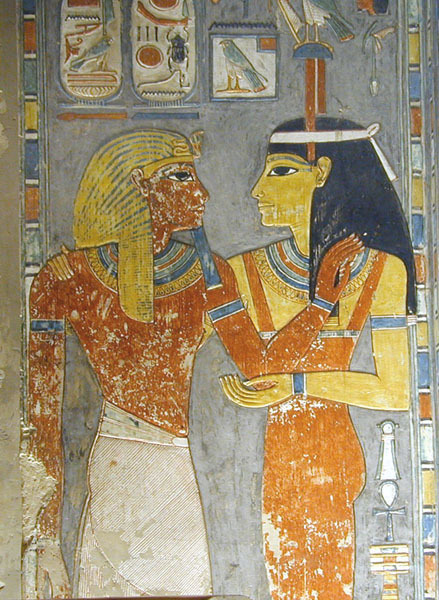
Imentet greeting Pharaoh Horemheb in his tomb in the valley of the Kings, KV 57. Imentet was a goddess representing the necropolises west of the Nile.
112 notes
·
View notes
Text

Osiris, from the tomb of King Horemheb
#Egypt#ancient Egypt#Osiris#Egyptian tomb#Egyptian#tomb#netcher#netcheru#deity#ancient history#ancient#underworld#duat#Horemheb#valley of the kings#kemetic#Kemet
93 notes
·
View notes
Text
Enobariapilled on this fine evening. there is no Baby Book subway au but if there was I just know she’s running D-Beatstro like it’s the navy
#absolutely fucking up a kale salad#in this au she has adult braces#‘Horemheb if you don’t get that tofu scramble out there in 5 seconds I’m not coming to your noise show’#Cashmere keeps trying to get her to go to like Planta and Vegandale but she’s decided she’s above it#‘I’m not letting you gentrify my veganism Cash’ *pulls a whole cucumber out of her tote bag*#she is a personal friend of John Sakars#every media property I get weird about could plausibly have a mid-2010s Toronto au tbh…..
4 notes
·
View notes
Note
Ramses I

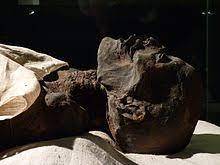
Ramses the I is usually somewhat overlooked, partially due to being overshadowed by his eventual successors and namesakes, Ramses II and Ramses III, the former of which is considered to be 'Ramses the Great', and both of which achieved great things in the realm of battle and buildings. Also unfortunate for Ramses I is the length of his reign, which while disputed, is considered to have been relatively short.
Menpehtyre Ramses, born of Seti, started and was the first Pharaoh of the 19th dynasty of Egypt, and the dates of his reign are generally considered to be around 1292–1290 BC or 1295–1294 BC. However, he was born as a common man, and his father, Seti, was a military commander. Originally, Ramses I's name was Pa-ra-messu, and he eventually grew to succeed his father's rank in the military. Due to this, he became a close confidant with the Pharaoh of the time, the Pharaoh Horemheb.
You may know Horemheb as being one of the main successors of the throne after Tutankhamun's death which, to my knowledge, is wrapped in a little bit of a mystery, but was likely due to genetic malformations from his many diseases. Ay and Horemheb, the Grand Vizier and the General of Armies (respectively), held the main power of the country while Tutankhamun was Pharaoh. This was a time of turmoil––the country was just recovering from the reign of the heretic Akhenaten, who had banned religious worship of any God but the Aten, and essentially attempted to enforce monotheism upon a culture that had been polytheistic for thousands of years previously. Akhenaten had also severely neglected Egypt's relationship with foreign powers. Obviously, people weren't very happy with Akhenaten, and I think it likely they were not fond of Akhenaten's son, Tutankhamun, either. But Tutankhamun, with the help of his advisors and of Ay and Horemheb, reversed many of his heretic father's commands and laws. But Tutankhamun still sailed to the west at the age of 19. He had two baby girls, but neither of them survived past infancy. He had no successors, so Ay took the throne, and then Horemheb.
Horemheb enacted many more reformations to remove Akhenaten's efforts to change Egypt. He tore down the statues of Akhenaten and his monuments, reusing the stone in monuments and temples of his own. He also reused the monuments built for Ay and Tutankhamun, though this was a common practice in Egypt. But Horemheb had no surviving sons, so when it came time for Horemheb to pass on and appoint a new Pharaoh, his Grand Vizier took his place; Paramessu, who would take the name Ramesses I, meaning "Ra has fashioned Him". Ramses I was nearly 50 years old when he ascended to the throne. It was a remarkable age to become Pharaoh, as at this time, he would've already been considered elderly.
What little he did during his life was later completed by his son and successor, Seti I. He himself accomplished mainly one thing, which was to send additions to the garrison at Aswan, the border between Egypt and Nubia; though he also led a military expedition into west Asia and reopened turquoise mines in the Sinai. But the most remarkable things are the ones he didn't complete himself, such as additions to the Karnak temple complex in east Thebes, known as Waset at the time. He ordered to be carved great reliefs into the second pylon of the Karnak temple, which is a massive gateway that one sees relatively soon upon entering the complex. In Abydos, he began construction of a chapel and a temple, but it would have to be completed by his son, as Menpehtyre Ramses died in either the year of 1290 or 1294. His reign was so short that he had very little time to schedule or complete any great monuments, and even his tomb was rushed to be completed, and he was hastily buried in the Valley of the Kings. This rush unfortunately led to a great deal of errors being made in the paintings upon his sarcophagus. Later, however, Ramses I's son, Seti I, finished the chapel in honor of his father, with beautiful carvings and reliefs at Abydos.
His tomb was robbed thoroughly. By the time archaeologists got to it, all that remained were two six-foot tall (1.8 meters) wooden guardian statues who once had gold-foil skin, statuettes of Gods from the underworld, and the massive granite coffin which no longer carried its' owner. Menpehtyre Ramses had been taken to the Royal Cache, located above Hatshepsut's mortuary temple to the southeast. It was the tomb of the pharaoh Amenhotep II, but repurposed to be a protective place for the mummies of many Pharaohs and Queens, as most of the tombs of the Valley of the Kings had become victims of graverobbers. These protective actions were taken by the High Priest of Amun, Pinedjem II, in the 21st Dynasty.
Unfortunately this did not stop the usurping of Ramses I's body. He was stolen by the Abu-Rassul family of grave-robbers and sold by a Turkish vice-consular agent named Mustapha Aga Ayat in Luxor to a man named Dr. James Douglas. Douglas brought Ramses I to the US around the year of 1860, where he was placed in a museum in Niagara Falls with little information known about him. All that was speculated was that he was 'a Prince of Egypt'. Ownership of the museum, and thus of Ramses I, was passed through several hands, but his importance was only recognized with the help of the Canadian Egyptologist Gayle Gibson. Fortunately, in the year 2003, October 24, Menpehtyre Ramses was returned to his homeland of Egypt, and is now resting in the Mummification Museum in Luxor, Upper Egypt.
#Ramses I#ancient egypt#ancient history#egyptology#sometimes people just send me random phrases like this. i dont know what to do with them#so i just write little essays#is this what you wanted?
27 notes
·
View notes
Text









HAPPY Valentine's Day!
❤️ Photo 1: A marble statue of Amor and Psyche, the lovers from the late 2nd Century CE novel "The Golden Ass" by Lucius Apuleius (125 - 170 CE). Marble. Roman copy, around 150 CE. ©️ by Osama S.M. Amin.
❤️ Photo 2: Painted limestone statue of an unnamed man and his wife. Thebes, Egypt. 18th Dynasty, (1543–1292 BCE). ©️ by Osama S.M. Amin.
❤️ Photo 3: Detail of a painting from the limestone walls of the Tomb of the Diver. Paestum, Italy. c. 480-470 BCE. By Miguel Hermoso Cuesta.
❤️ Photo 4: Amorous couple from central India, Chandella Dynasty, 11th century CE. By Jan van der Crabben.
❤️ Photo 5: Joined Couple from Nayarit, Mexico. (100 BCE-250 CE). From James Blake Wiener.
❤️ Photo 6: The Arnolfini Wedding painting by the Netherlandish Renaissance artist Jan van Eyck (1434 CE).
❤️ Photo 7: General Horemheb & Wife. 18th Dynasty, c. 1327-1323 BCE. From the tomb of Horemheb at Saqqara, Egypt. ©️ by Osama S.M. Amin.
❤️ Photo 8: The painted terracotta Sarcophagus of the Married Couple from the Etruscan site of Cerveteri. c. 530-520 BCE. By Sailko.
❤️ Photo 9: Woman Spying on Male Lovers by an unknown artist, Qing Dynasty.
270 notes
·
View notes
Text
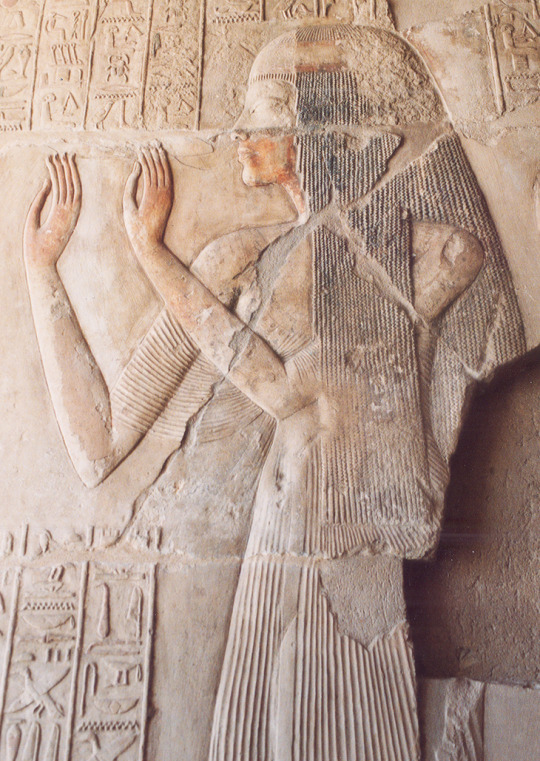
Tomb relief of Merit, wife of Maya, Chancellor and overseer of the treasury during the reign of Kings Tutankhamun, Ay and Horemheb of the 18th Dynasty of Ancient Egypt.
From the tomb of Maya at Saqqara.
https://egypt-museum.com/relief-of-merit-wife-of-maya/
41 notes
·
View notes
Text
Glitch Time
“The Boy King is weak,” said High Priest Ay to the general, Horemheb.
Emma shot the priest and he dissolved into dust.
No, that was after.
There were realities where Kira hadn't found them in time, realities where she'd died while out scouting or had never been on Ecates at all. Oddly, there were no realities wherein their little squadron of seven had ever been prepared for the Naiki attack; each and every time, they were caught in varying degrees of surprise.
Emma watched the facility burn, watched the researchers flee as floe worms burst from the ice to devour them like grapes. She watched instances where Marsh and Sarah failed to eject in time. “I can bail you out again, like I did with the worm,” Emma said over private coms to Daughter, “But this time I want something in exchange.”
Emma shot the priest and he dissolved into dust.
None of that happened.
She shivered in the cockpit, blinking in a vain attempt to focus sundered vision. Chaos raged all around her but most of her consciousness was sinking into the Lich's velveteen waters. It was impossible to process time without Sam, but here she was trying to do it all by herself anyway. She had to.
The threads of time were so silver, so beautiful, so cold. Emma reached for one, pulled; Knell began to move faster. That was in the future.
The hammer fell, the hammer fell, the hammer fell.
There were no words in any human language for how horrible the sound was. The Tokugawa caved like an empty soda can and there was nothing left of JW to even scrape out of it.
She jumped.
She jumped.
She jumped.
The hammer obliterated the Lich and turned Emma into human paste instead. She drank deeper, pulled a new thread, engineered a reality where the Demolisher was now meters away. This time, Thresher could react. The hammer never fell. She was back at her soul vessel.
Emma shot the priest and he dissolved into dust.
No, not yet. Breath came ragged; she convulsed in the cockpit. Emma fumbled the threads and the missiles landed and now her mech was missing an arm and she was crying laughing screaming and she couldn't move and she couldn't move and she couldn't move and she couldn't see and she reached for the threads she had to hold the threads she had to pull the threads her team needed her where was Sam where was Sam when was Sam why wasn't Sam here?
A hand caressed Emma's face. She looked up. The field was a ruin of burning bodies. She watched herself, in the third person, lift the Unraveler and fire.
Emma shot the priest and, finally, he dissolved into dust.
The battle was over.
She couldn't even rely on GANDALF to take her back to safety. That, too, she had to do by herself – but by now she was deep underwater. Sound and vision came muffled. She followed on mental auto pilot behind Harvester's blurry outline, only able to track him because he glowed so bright. Somehow, that got her back into the maintenance bay.
Once there she managed to power the core back down, but thereafter vacillated between raving and catatonic in the cockpit, clutching her ankh amulet in both hands. Until today, she could have counted the number of times she'd had to glitch time like this on both hands and still have a few fingers left over. Ostensibly, that was why her boss had wanted to print a Lich in the first place, but...Emma had never had to use the core like this twice in one day, let alone twice in one month. Today, she'd done it twice in as many hours.
New threads of reality kept flowing past her eyes. She didn't know how to make it stop. No wonder Sam felt so exhausted, living like this. Tears flooded in the longer she watched. The facility and the people inside of it were safe – that was the most important thing, she knew. But it was far from perfect. The generator should have never taken a hit. Actium and Black Baccara should still be standing. That mysterious Monarch chasing Knell should have never gotten away.
The core was out of power now, but maybe...maybe once it was recharged, she could try again and get it right...
For now, all she could see were a thousand-thousand realities, none of which were her own. She saw everything she could have done different. She watched deaths on repeat. She saw angles of existence normally invisible to human eyes, and hidden truths spoken of only in the Lessons. This happened every time she used the core, but...it'd never lasted this long before.
Emma laughed, and cried, and, somewhere in the remaining depths of her fraying consciousness, prayed desperately for it to stop.
#lancer rpg#lancer ttrpg#lancerrpg#horus#emma tansy#just a thingy i wrote in response to last session's battle#it was pretty horrific#anyway i figure messing around with time without proper safe guards is what drives most lich pilots mad#drink deep and descend
22 notes
·
View notes
Text
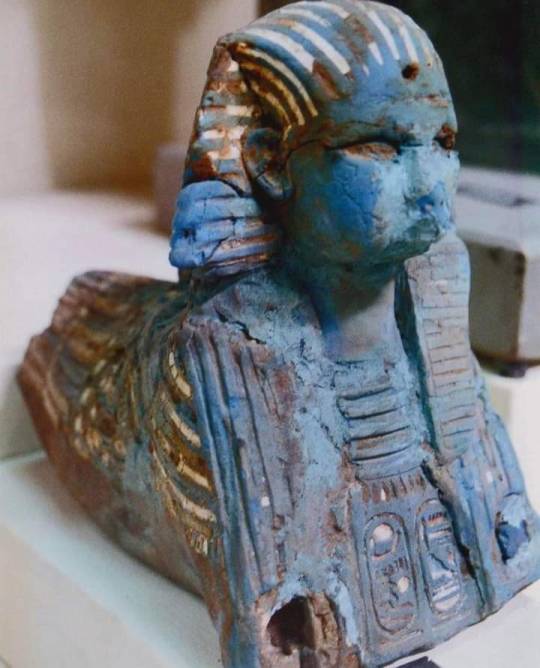
Sphinx of Horemheb
This Sphinx is made of faience and gold and engraved with the cartouches of King Horemheb. It was found in Karnak temple.
18th Dynasty Luxor Museum
37 notes
·
View notes
Text

Statue of Horemheb and Horus
In this nearly life-size statue made of white limestone, Horemheb is seated on the right side of Horus, who places his right arm around the king’s waist. The god’s left hand is holding the sign of life. The two figures greatly resemble each other.
Both have bare upper bodies and wear the shendyt kilt and the Pschent or double crown in ancient Egypt. The king is also wearing the striped royal nemes headdress and a false divine beard. On first inspection, the sculpture appears to be in a perfect state of preservation, but this is deceptive.
New Kingdom, late 18th Dynasty, reign of Horemheb, ca. 1319-1292 BC. Now in the Kunsthistorisches Museum, Vienna. Inv. 8301
Read more
372 notes
·
View notes
Text

the gods Osiris, Anubis, and Horus depicted in a wall painting in the tomb of Pharaoh Horemheb in the Valley of the Kings.
308 notes
·
View notes
Photo

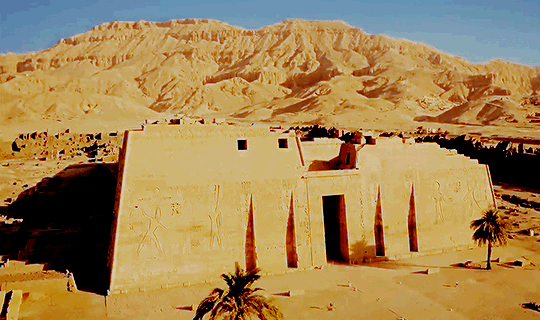
“The Arabic name Medinet Habu (“City of Habu”) was thought to reflect the site's more ancient connection with Amenhotep, the son of Hapu, a respected sage of the 14th century BCE, later deified, whose memorial temple was immediately to the north. No trace of this association has come down from ancient times, however, as the site's formal name in Egyptian was either Djeme, “Males and Mothers”— originally with reference to the eight primeval deities, or Ogdoad, whom the ancients believed to be buried there — although the name continued to be used by the site's later Christian inhabitants.
Medinet Habu's most conspicuous standing monument is the great memorial temple of Ramesses III (reign 1198–1166 BCE). On the grounds of this complex, however, are numerous other structures, most notably the so-called small temple (built in stages, from the mid 18th Dynasty until the second century CE) and the memorial chapels of the divine votaresses of Amun (25th Dynasty and 26th).
Among other ancient buildings at the site, but less well preserved, is the memorial temple of King Horemheb (reign 1343–1315 BCE), usurped from his predecessor Ay (reign 1346–1343 BCE), which abuts Ramesses III's enclosure on its northern side. To its east are a number of tomb chapels made for high officials of the later New Kingdom.
Most abundantly on the enclosure wall of Ramesses III's temple are the remnants of later mud-brick houses — from the town that engulfed the site beginning in the 11th century BCE until the site was abandoned in the 9th century CE. Reuse of Ramesses III's temple was made especially apparent by the decorated doorways that were cut into its northern outer wall during early Christian times, when the Holy Church of Djeme occupied the building's second court.
The great temple of Ramesses III was called the Mansion of Millions of Years of King Usermare-Maiamun; ‘United with Eternity in the Estate of Amun on the West of Thebes.’ The precinct, 210m × 315m, was entered by two stone gates in the mud-brick enclosure wall, on the eastern and the western sides. The western gate — presumably the normal entrance for employees who lived outside the precinct — was destroyed when the temple was besieged in a civil war, during the reign of Ramesses XI (c. 1096 BCE). The eastern entrance, approached by a canal, terminated in a harbour, from which important visitors and statues could enter the temple.”
SOURCE: William J. Murnane, The Oxford Encyclopedia of Ancient Egypt (2001)
#egypt#ancient egypt#egyptology#archaeology#historyedit#mine#my edit#medinet habu#20th dynasty#new kingdom#thebes#waset#luxor#ramesses iii
176 notes
·
View notes
Text
Just for reference, a list of Egyptian themed asteroids.
Mythology:
3554 Amun
1912 Anubis
99942 Apophis
2062 Aten
161 Athor
101955 Bennu
2340 Hathor
1924 Horus
42 Isis
1122 Neith
287 Nephthys
306367 Nut
1923 Osiris
5011 Ptah
2100 Ra-Shalom
5381 Sekhmet
136818 Selqet
86551 Seth
896 Sphinx
4257 Ubasti
3554,1912,99942,2062,161,101955,2340,1924,42,1122
287,306367,1923,5011,2100,5381,136818,86551,896,4257
Others:
19913 Aigyptios
326290 Akhenaten
4161 Amasis
5010 Amenemhet
4847 Amenhotep
51895 Biblialexa (Library of Alexandria)
4412 Chephren
4415 Echnaton
5249 Giza
2436 Hatshepsut
2435 Horemheb
1813 Imhotep
3362 Khufu
216 Kleopatra
4568 Menkaure
4355 Memphis
4413 Mycerinos
3199 Nefertiti
1068 Nofretete
4416 Ramses
4906 Seneferu
4414 Sesostris
5009 Sethos
4512 Sinuhe
4848 Tutenchamun
4846 Tuthmosis
4907 Zoser
19913,326290,4161,5010,4847,51895,4412,4415,5249,2436
2435,1813,3362,216,4568,4355,4413,3199,1068,4416
4906,4414,5009,4512,4848,4846,4907
Probably forgot some... do tell if you can think of any.
46 notes
·
View notes
Text
"I begin this book in the third year of my exile on the shores of the Eastern Sea, whence ships put out for the land of Punt, near the desert, near those hills from which stone was quarried to build the statues of former kings. I write it because wine is bitter to my tongue, because I have lost my pleasure in women, and because neither gardens nor fish pools delight me any more. I have driven away the singers, and the sound of pipes and strings is torment to my ear. Therefore, I write this, I, Sinuhe, who make no use of my wealth, my golden cups, my ebony, ivory, and myrrh.
They have not been taken from me. Slaves still fear my rod; guards bow their heads and stretch out their hands at knee level before me. But bounds have been set to my walking, and no ships can put in through the surf of these shores; never again shall I smell the smell of black earth on a night in spring.
My name was once inscribed in Pharaoh’s golden book, and I dwelt at his right hand. My words outweighed those of the mighty in the land of Kem; nobles sent me gifts, and chains of gold were hung about, my neck. I possessed all that a man can desire, but like a man I desired more — there–fore, I am what I am. I was driven from Thebes in the sixth year of the reign of Pharaoh Horemheb, to be beaten to death like a cur if I returned — to be crushed like a frog between the stones if I took one step beyond the area prescribed for my dwelling place. This is by command of the King, of Pharaoh who was once my friend.
But before I begin my book I will let my heart cry out in lamentation, for so an exile’s heart must cry when it is black with sorrow.
He who has once drunk of Nile water will forever yearn to be by the Kile again; his thirst cannot be quenched by the waters of any other land.
I would exchange my cup for an earthenware mug if my feet might once more tread the soft dust in the land of Kem. I would give my linen clothes for the skins of a slave if once more I might hear the reeds of the river rustling in the spring wind."
— Mika Waltari, The Egyptian, 1945
#Mika Waltari#literature#finnish literature#classic literature#spilled ink#quotes#book quotes#literary quotes#excerpts#book excerpt#lit#books#books and libraries#prose#novel#egypt#ancient egypt#exile#20th century#1940s
11 notes
·
View notes
Text


im actually feeling very normal about this Theon Adjacent Piss OC! very normal very regular definitely not putting him in a tupperware ad shaking it <3
#yeah i art-bred him yeah im cringe we know#my son my boy my pet hamster#u know that bit in the first book where katniss mentions the guy who got a 3 and still won#that was him heeheehee my failson horemheb#ikte
0 notes
Note
Hi! Were any temples/anything really built during Tutankhamun’s reign? Thank u!
If you mean 'did he build anything like the temple of Karnak?' then, no not really. He wasn't around long enough for that. To be fair most kings didn't build new temples except their Mortuary temples for their cult after death. What they did do, was add to existing temples, and Tutankhamun was no different.
Roughly three years into his reign the worship of the Aten stopped, and Amun was restored as the chief god of the Pantheon. Work was then commissioned new additions to the temple of Amun at Karnak. One of these additions was the Avenue of Sphinxes leading to the Temple of Mut, and yes it is the Avenue of Sphinxes everyone has heard of, though many of the Sphinxes date to after Tutankhamun's time. At Luxor temple, he restored the Amenhotep III hypostyle hall, and had images of Amun, which Akhenaten had destroyed, restored to their original form. This allowed festivals such as the Ipet/Opet festival, a festival dedicated to the Theban Triad of Amun, Mut, and Khonsu, to be held again.
We have to remember that during the time that most of these building projects were commissioned, Tutankhamun was only 12 years old, and wasn't making those decisions. 99% of his building projects were for the restoration of Amun, and this is mostly the re-solidifying of power for the ousted High Priests of Amun and various top nobles (most notably Tutankhamun's successor Ay). Their temples were closed by Akhenaten, mostly because the Priesthood had gained so much power they were using it to threaten the power of the King. Akhenaten, and several kings before him, had attempted to shift the Chief Deity of the Pantheon towards the Aten. This isn't an unusual thing to happen in Egyptian history, as Egypt had several chief deities over the course of it's history (Neith, Osiris etc) and one of the reasons we don't refer to Akhenaten as a heretic. The changing of religion wasn't the issue, it was the sudden shuttering, rather than slow phasing out, of the most powerful Priesthood in the country that got him erased from history. But I digress.
There was one other building known as pr n nb-xprw-ra-mry-imn HqA-wAs.t or Temple-of-Nebkheperure-Beloved-of-Amun-Who-Puts-Thebes-in-Order. This building no longer exists, and it took a while to prove it existed in the first place. It used talatat blocks from Akhenaten's own monuments as infill in its construction. However, the building itself was torn down and used as infill for Horemheb's monuments.
In fact, pretty much all of Tutankhamun's monuments or building projects were either torn down due to being unfinished or usurped by his immediate successors as the High Priests of Amun sought to wipe any trace of those who had wronged them from history.
42 notes
·
View notes